Continuing on with our story of the Danube River in Music, as mentioned before, it wasn’t only Johann Strauss II who chose to immortalise the river in music.
In his two collections of love songs, the Liebeslieder Waltzes, Opp. 52 and 62, Johannes Brahms took lyrics from Georg Friedrich Daumer’s Polydora and set music in the Austrian Ländler style for voices and piano 4-hands.
The poem, about a house on the shore of the Danube with a rosy-cheeked maiden locked inside, has the hero promising that he will snap the 10 bolts on the door like glass. Mere iron cannot separate lovers!

Johannes Brahms, ca 1872
Johannes Brahms: 18 Liebeslieder Waltzes, Op. 52 – No. 9. Am Donaustrande (On the Danube shore) (Edith Mathis, soprano; Brigitte Fassbaender, alto; Peter Schreier, tenor; Walter Berry, bass; Paul von Schilhawsky and Erik Werba, piano duet)
Czeck composer Julius Fučík (1872–1916) had an important career as a conductor of military bands. As a composer, he wrote over 400 marches, polkas, and waltzes and is often compared to the American composer John Philip Sousa. In 1909, when his regimental band was relocated to Subotica, Serbia, he wrote Legends of the Danube, one of his most sophisticated concert waltzes. The waltz theme, in three, gets interrupted by the occasional section in duple time on the brass, suggesting the Legends of the title.
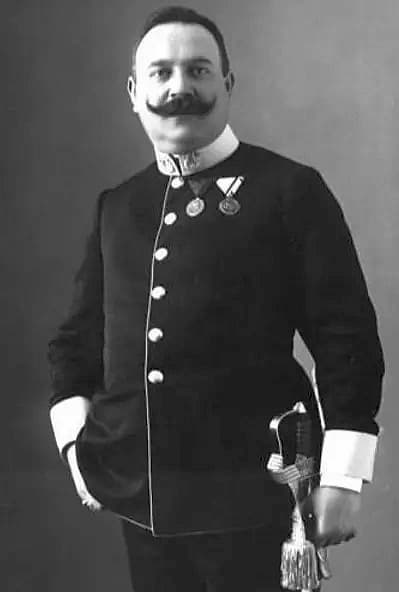
Julius Fučík
Julius Fučík: Donausagen, Op. 233 (Czech Philharmonic Orchestra; Václav Neumann, cond.)
Going back in time a bit, we have a Danube setting by Franciszek Lessel (1780–1838). Lessel was born in Poland and, at age 19, went to study with Joseph Haydn, remaining his student until Haydn’s death in 1809. He returned to Poland and became head of Warsaw’s Amateur Music Society while working as a court musician. He used the Ukrainian song, Jichaw, the Cossack from the Danube, as the basis for his variation set. The lyrics were in an 1808 collection by August Tiege, and many other composers set the lyrics, including Beethoven, Hummel, and Weber.
Franciszek Lessel: Variations on the Ukrainian song Jichaw kozak zza Dunaju (Jichaw, the Cossack from the Danube), Op. 15, No. 1 (Dorota Cybulska-Amsler, piano)
A similar idea of the Cossack leaving the Danube behind was set by Dmitri Shostakovich in his settings of songs for the front. Starting in 1941, the Leningrad Conservatoire had its composers arrange nationalist music for military concert parties. In July 1941, Shostakovich wrote some 111 pages of music, scoring popular songs of the day by Soviet composers and songs and arias from the Western and Russian classical tradition (by Beethoven, Bizet, Dargomyzhsky, Mussorgsky, Rimsky-Korsakov, and others). The scoring depended on who was available for performances.
Ukrainian baritone, playwright, and composer Semyon Gulak-Artemovsky (1813–1873) was a student of Glinka in St Petersburg. His nationalistic comic opera A Cossack Beyond the Danube first appeared in 1866 but underwent considerable changes over time. Shostakovich used a version published in Kiev in 1936 as his source.
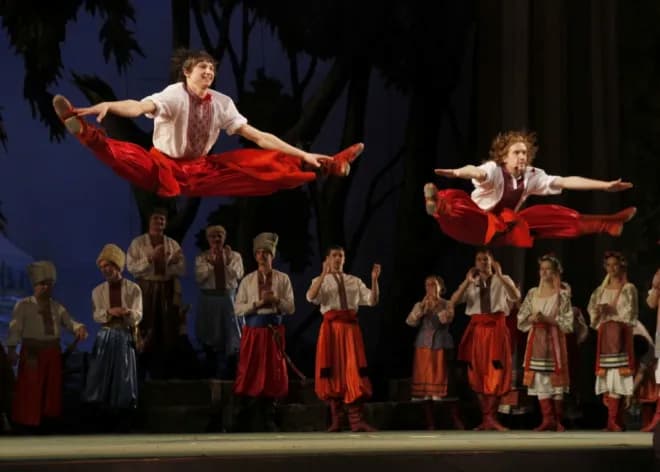
Gulak-Artemovsky: A Cossack Beyond the Danube, 2022 (Odessa National Academic Opera and Ballet Theatre)
Dimitri Shostakovich: Songs for the Front: Gulak-Artemovsky – A Cossack Beyond the Danube: Duet of Karas and Odarka (Natalia Pavlova, soprano; Dmitry Volkov, bass; Ayako Tanabe, violin; Valery Masterov, cello; Nikolay Khondzinsky, cond.)
Alexander Dolukhanian (1910–1968) wrote his ode to the Danube, Dunai Goluboi (The Danube is Blue) tracks the colour of the Danube. At the end of the first verse, as the soldiers head toward war, ‘the Danube is blue. | But what we saw was grey’; in the third verse, after the battle, ‘the Danube is blue. | But what we saw was red’. It’s only in the fifth verse as happy tourists flock to the river, ‘… for the first time we see: the Danube is blue’.
Alexander Dolukhanian: Dunai Goluboi (The Danube is Blue) (Dmitri Hvorostovsky, baritone; Style of Five; Moscow Novaya Opera Orchestra; Constantine Orbelian, cond.)
A German university song about a whirlpool in the Danube indicates that it’s harmless to underage girls, but older girls, if they’ve lost their myrtle wreath, are in danger of being captured by a ‘ein grosser Nix’, a water spirit, as happens to Miss Kunigund in the story.
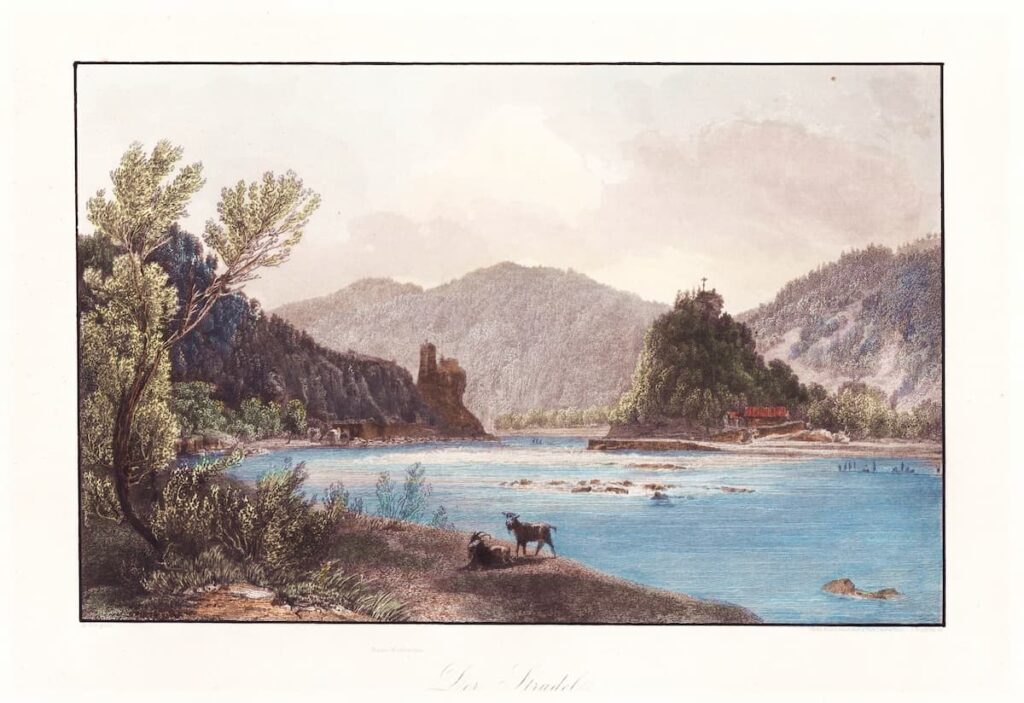
The Strudel (Whirlpool), Grein, Werfenstein, on the Danube, 1850
Traditional: Donaustrudel (The Danube’s Whirlpool) (Erich Kunz, baritone; Vienna State Opera Chorus; Vienna State Opera Orchestra)
As part of his work for violin, cello, and piano, Trois fleuves (3 Rivers), French composer Louis Sauter made the Danube the third of his rivers: La Seine, La Néva (in Russia), and then set Le Danube as a Hungarian dance, with a nostalgic melody in the middle.
Louis Sauter: 3 Fleuves – No. 3. Le Danube (Oleg Yatsyna, violin; Ivan Renansky, cello; Marina Romeyko, piano)
Leonid Desyatnikov (b. 1955) took the folk music of Bukovina—a region in the Carpathian Mountains now divided between Romania and Ukraine—as his inspiration. The melodies came from a 1957 collection of songs published in the USSR, and Desyatnikov combined them with his own classical training in Leningrad.
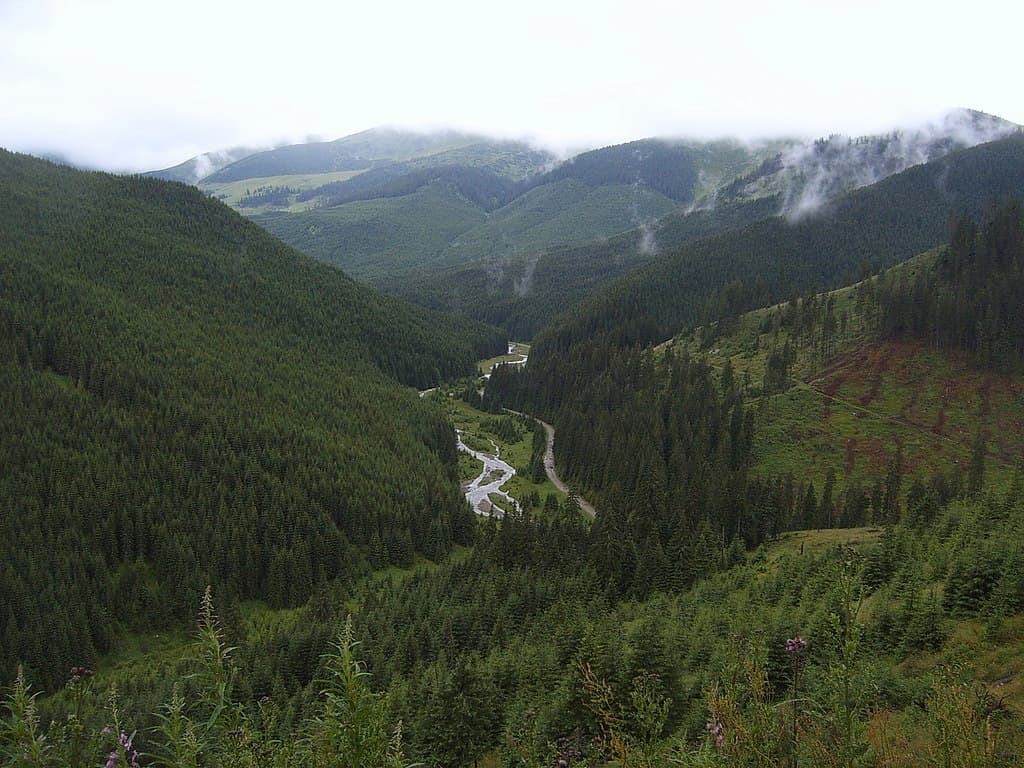
Prislop Pass, connecting Maramureș with Bukovina in northern Romania (photo by Vberger)
Leonid Arkad’yevich Desyatnikov: Songs from the Bukovina – No. 3. Ian, Where d’you Come From? Beyond the Danube (Lukas Geniušas, piano)
In 1959, Czech composer Bohuslav Martinů wrote a set of 4 madrigals, some of his mostly unknown choral chamber music. The first one, of course, is set on the Danube.
Bohuslav Martinů: Madrigaly, H. 380 – No. 1. Tam z tej strany Dunaja (From the Other Side of the Danube) (Martinů Voices; Lukas Vasilek, cond.)
German-born American composer Fred Fisher (1875–1942) was not only a songwriter but also a publisher of popular music in New York on Tin Pan Alley. If you don’t recognise his name, you’ll know his music, such as Chicago (The Todd’ling Town) and Come Josephine in My Flying Machine. He also wrote The Dance of the Blue Danube, which was arranged for the Wiltern Theatre Organ in Los Angeles, the second-largest theatre organ in the US.
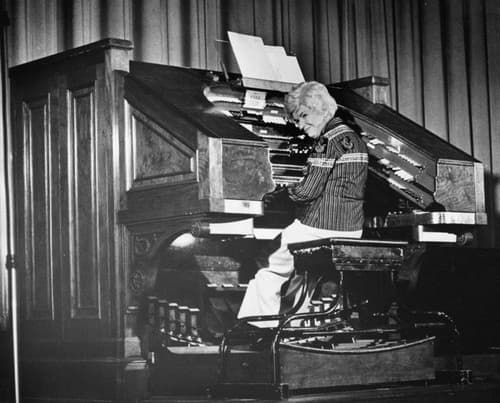
The Wiltern Kimball Theatre Organ played by Ann Leaf, 1979 (Los Angeles Herald)
Fred Fisher: The Dance of the Blue Danube (arr. J. Roseveare for theatre organ) (Jim Roseveare, theatre organ)
We’ll close our Danube music survey with some last pieces from Hungarian composer Lajos Bárdos (1899–1986,) Czech composer Vítězslav Novák (1870–1949), and film music by Dalibor Grubačević (b. 1975) about the rivers of Croatia.
Lajos Bárdos: Szeles a Duna (Wide is the Danube) (Vandor Chorus; Laszlo Revesz, cond.)
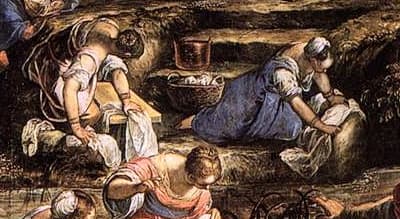
Laundry by the River
Vítězslav Novák: Slovenské spevy (Slovak Songs), Book 2 – No. 18. Pri Dunaju šaty perú (They do their laundry by the Danube) (Eva Garajová, mezzo-soprano; Miroslav Sekera, piano)
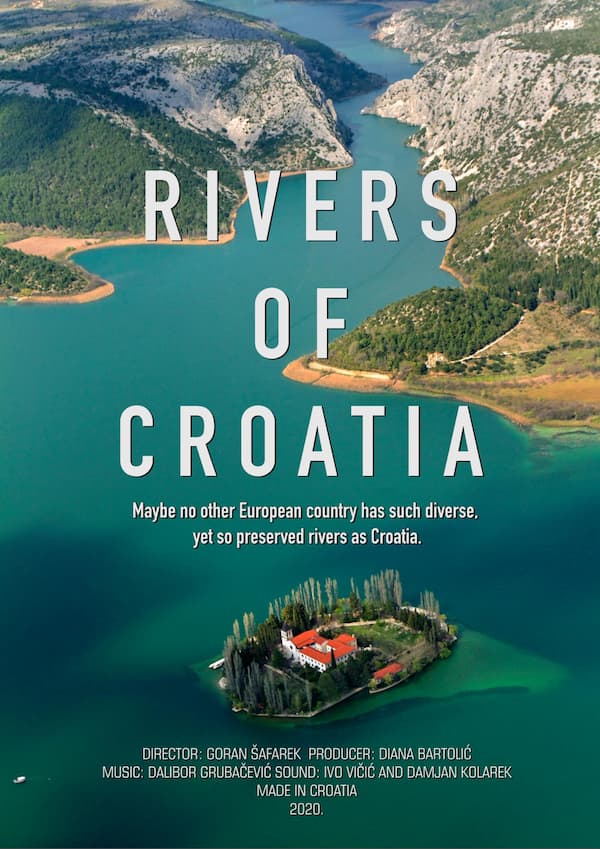
Rivers of Croatia, 2021
Dalibor Grubačević: Rivers of Croatia: Spring Storms and The Danube (Dalibor Grubačević, instruments)
This certainly isn’t an exclusive list – there are far more Danube pieces lurking in the wide world of music. It has been interesting, though, to see how important it is, as a river, to so many cultures and so many composers.
For more of the best in classical music, sign up for our E-Newsletter


